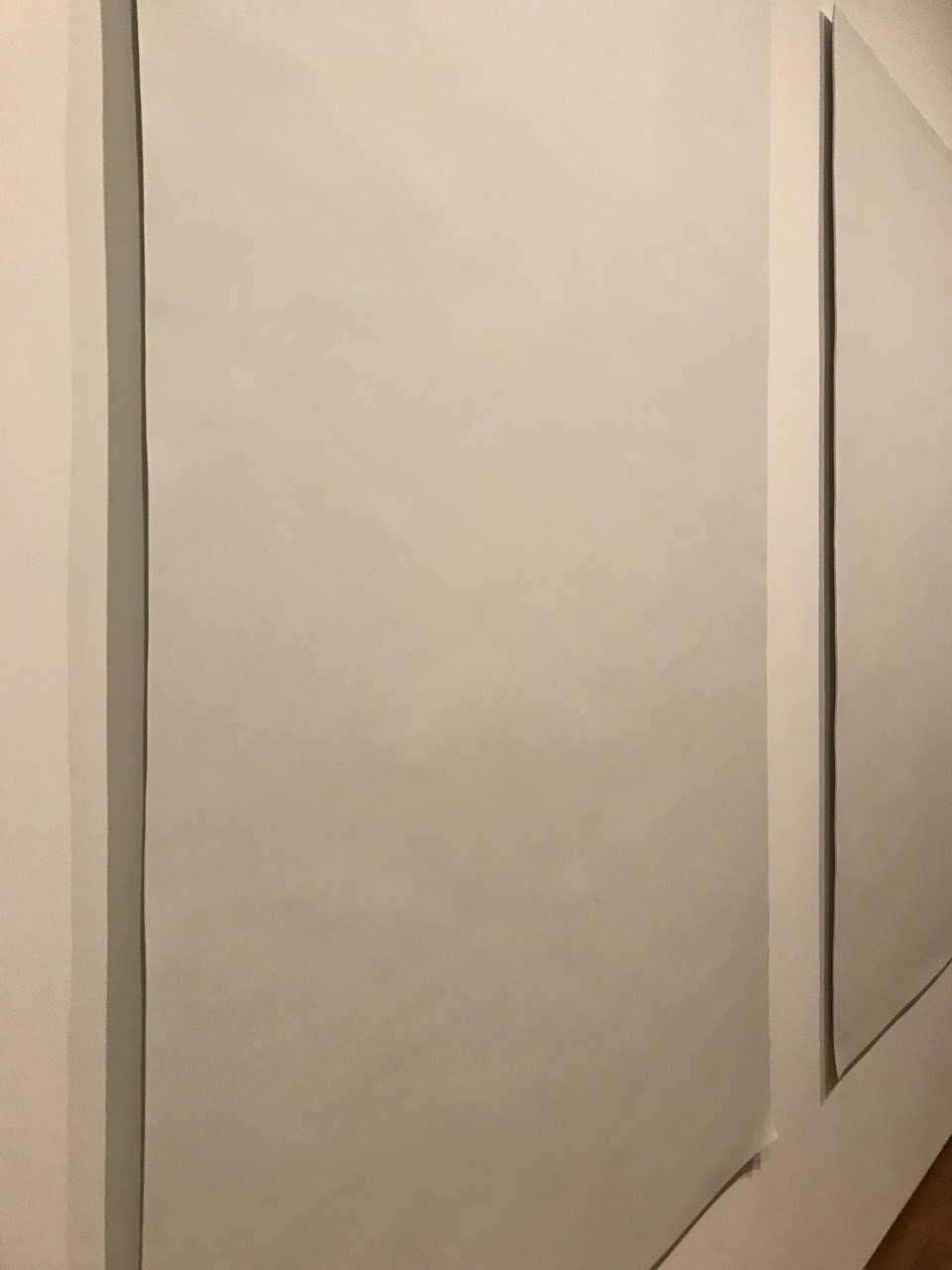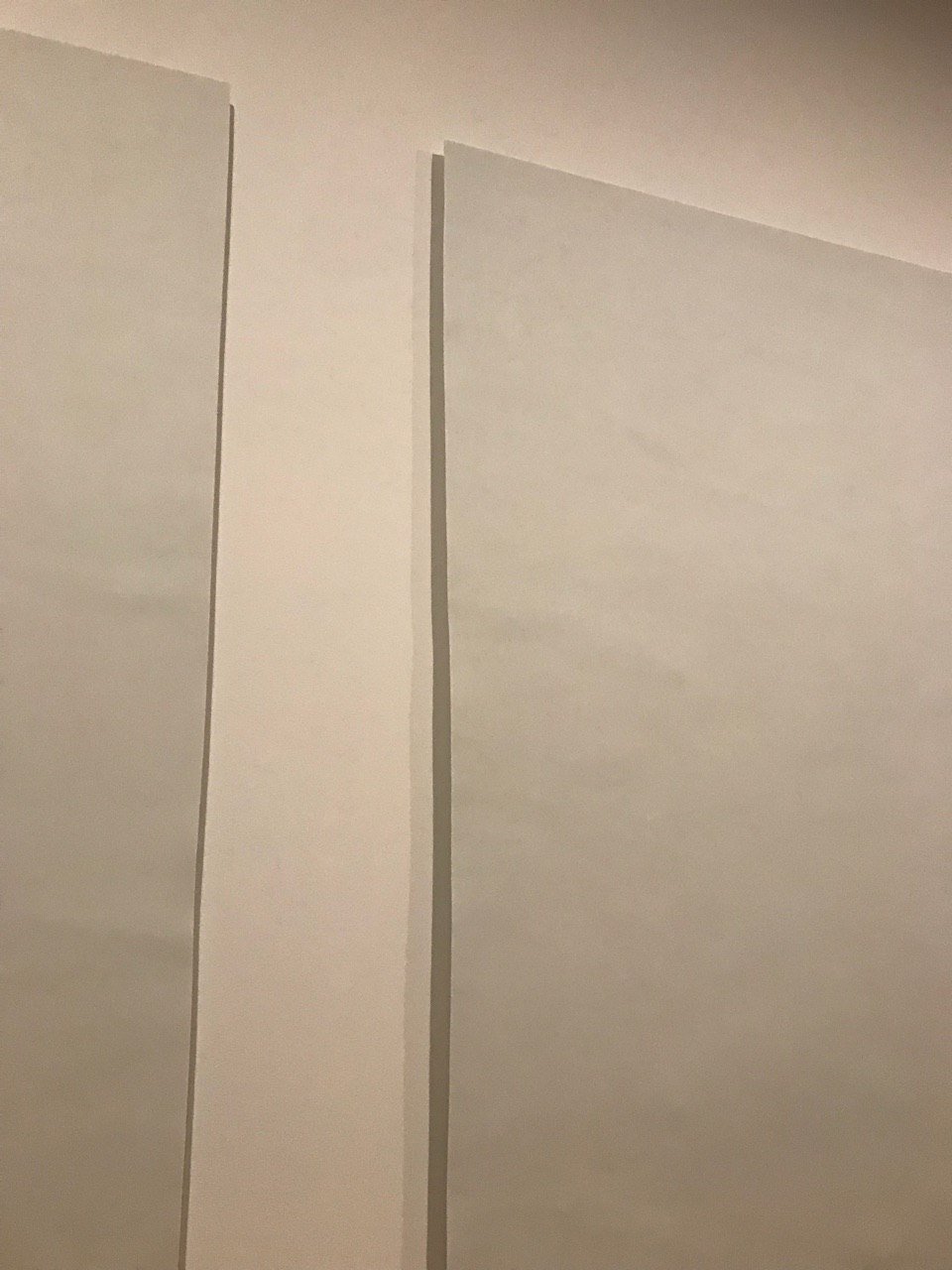Compared to the previous readings where we learnt about thoughtful interaction or Social practice art, Minimalism, a movement that kickstarted in the late 1950s is an extension from the abstract idea that art should have its own reality and not be an imitation of some other thing. Tate states that we tend to think of art as representing an aspect of the real world (a landscape, flower, person, etc), or even to reflect an experience such as an emotion or feeling. However according to Frank Stella in the context of minimalism, ‘What you see is what you see’.
With minimalism, no attempt is made to represent an outside reality, the artist wants the viewer to respond only to what is in front of them. The medium, (or material) from which it is made, and the form of the work, is the reality.
- Tate
One aspect which I enjoyed from the exhibition is the inclusion of artists/artworks that utilises the many interesting mediums that can be used in this movement.

An example of such artworks that enjoyed was Milkstone (1980) by Wolfgang Laib
But the artwork that really appeals to me is Blank Paper by Liu Jianhua.

‘Blank Paper’ by Liu Jianhua at Tate

‘Blank Paper’ by Liu Jianhua at National Gallery – the folds at the tip of the “paper” is made intentional. To me, it shows a more paper-like and fragile quality of the work itself.

‘Blank Paper’ by Liu Jianhua at National Gallery. One is also able to see the thinness of the porcelain up close
Exhibited at the National Gallery, Liu Jiahua’s ‘Blank Paper’ consists of 3 large porcelain sheets that is thinly crafted to resemble blank pieces of paper, similar to the title of the art piece.
Where do their ideas come from?
Jianhua first learned his craft at the age of 14. He learnt traditional ceramics by his uncle, a ceramicist, in the city, Jingdezhen, the centre of China’s porcelain industry. He then went to the Jingdezhen Ceramic Arts Institute, studying fine art and learning contemporary art styles.
Most of his works involves the usage of porcelain, ceramics, gold, and fiberglass.
I have also read up about galleries explaining that his work has often been interpreted as a comment on China’s rapid economic development and industrialisation and its role in the globalised economy, which to me, is along the same theme that Ai Weiwei explores.
Hence, it can be suggested that his ideas mainly comes from his upbringing and culture. Based on his main choice of materials such as ceramics.
What was their process and methodology for creating their works?
Silke Schmickl, the curator of the gallery roughly explained on the curation and the process of displaying this piece. She said that Jianhua himself created the sheets by rolling it out into thin pieces. I believe that he needed time to experiment with it, as it is quite difficult to find the correct combination of water, clay, heat and etc. Just like baking.
She also explained the difficulty of putting up the artwork due to its fragility. Something along the lines of having to put it onto something, akin to a platform(?) and placing screws onto it so it does not directly stick onto the piece. On other pieces of work, she also explained the steps they took to care and display it. Making the museum come to life, and it is something I appreciate from the experience very much!
Which artworks do you think work well and why?
I believe that this piece, and his artworks in general is inline with the minimalism theme. The following quote by Heini Lehtinen explains how this piece falls into the minimalism category:
“In his work (Liu Jianhua), the Shanghai-based artist places strong emphasis on form and material to the point of standing away from prevailing tendencies in contemporary art, such as social commentary and narrative approaches. With a “no meaning, no content” approach to art, Liu focuses on form and methods of industrial production in making artwork, in which he transforms paper, leaves, bones and ink drops into fragile and at times surreal porcelain sculptures.”
Personally, I this piece appeals to me mainly because of the juxtaposition and play of the material itself, porcelain. I think it is a very smart way to reinvent the usage/concept of materials that we are taught to presume in our society. The blank canvas also makes me think about what I would actually write on this “paper” (probably something very important), as it is extremely fragile and “expensive” due to the craftsmanship that involves into making it. Personally, it is a reminder to be more careful of the words we convey to people.

You must be logged in to post a comment.